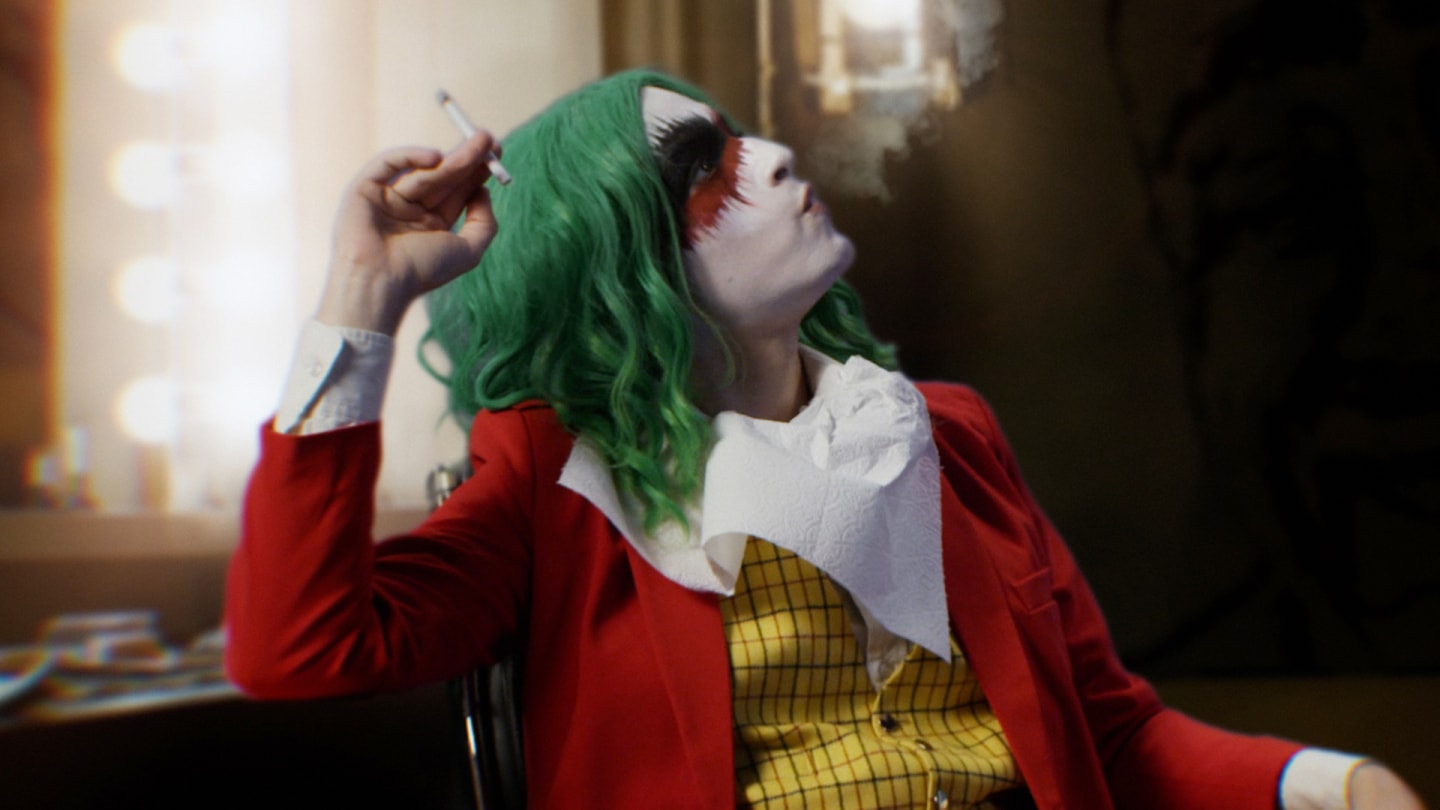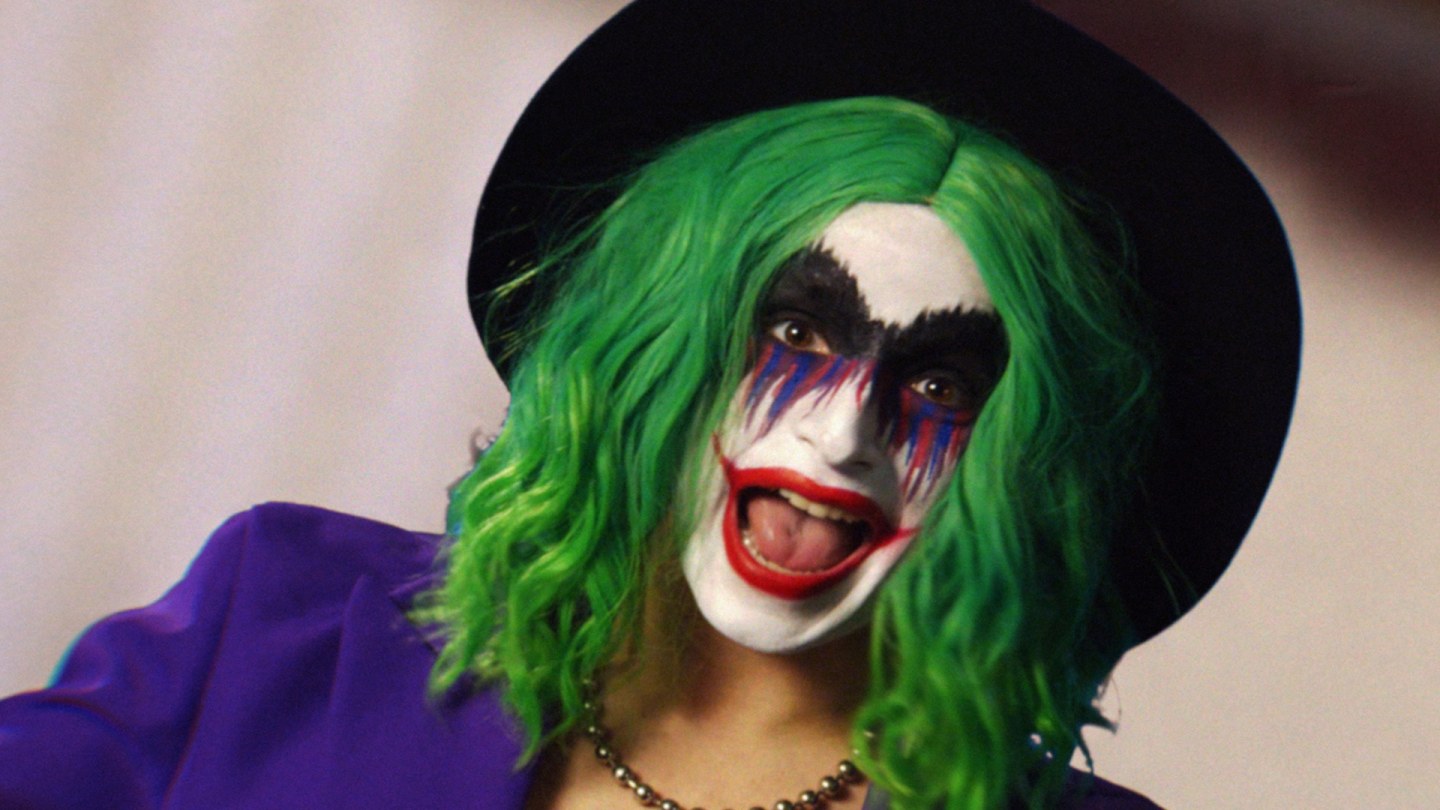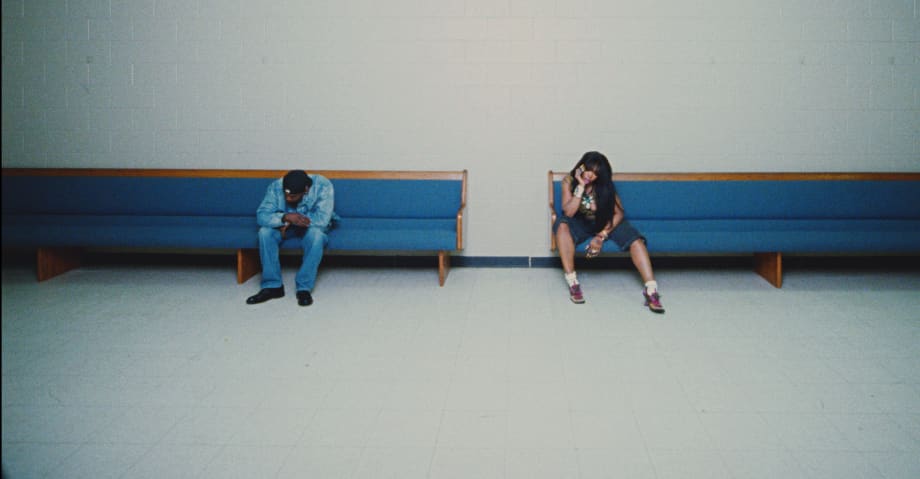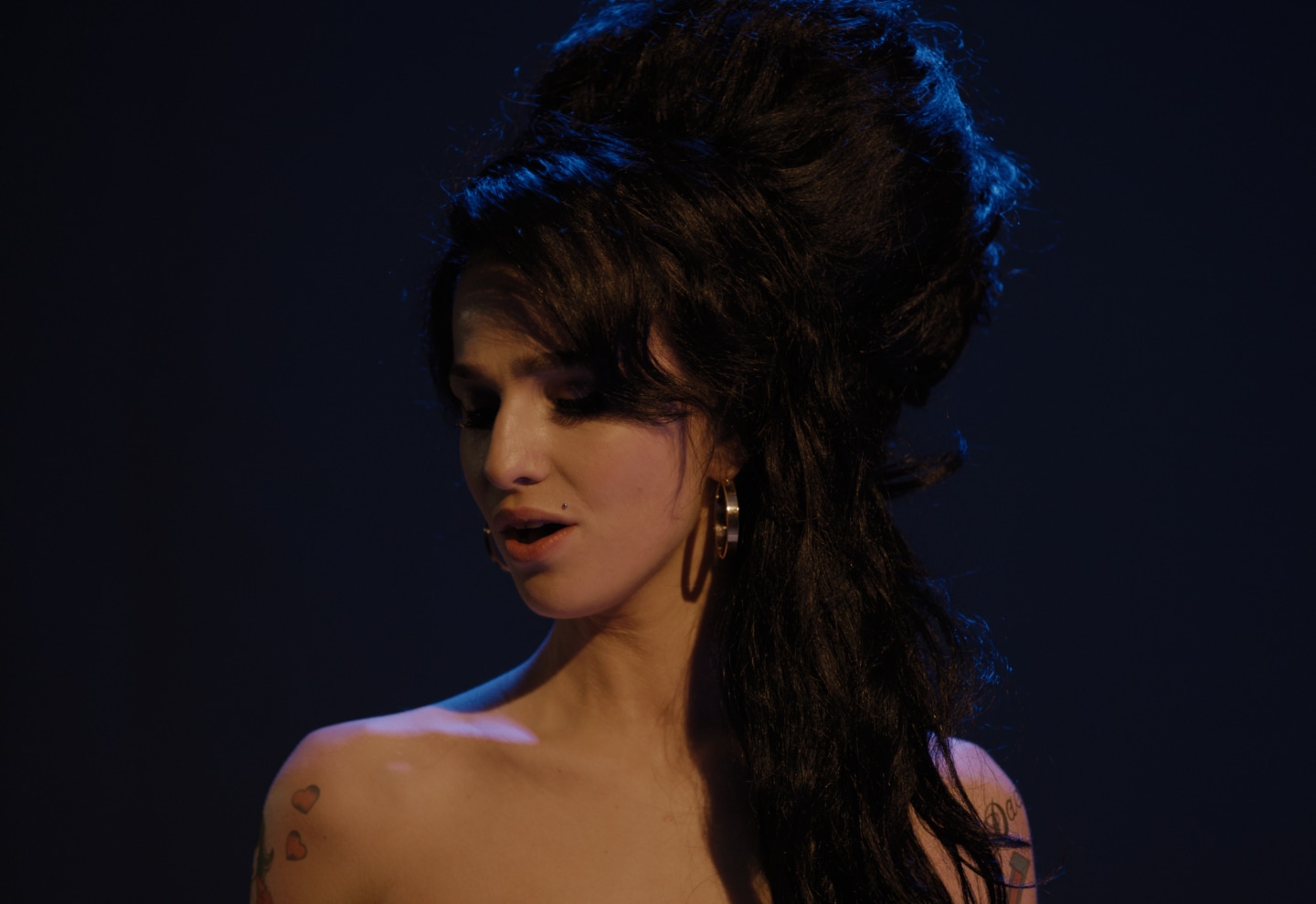The People’s Joker is prestige comic book parody”>
Every frame of The People’s Joker, the debut feature from Vera Drew, drips with an anarchist spirit. In theaters now, the film began as a lark during the COVID-19 lockdown, a gag that poked fun at the endlessly rebooted Batman franchise and its iconic lead villain the Joker. It eventually grew into a feature-length film with Drew as its lead Joker and enlisted dozens of friends and collaborators to create the dynamic, varied visual style. Far from a cheap gag, The People’s Joker creates a one-of-a-kind comic book movie experience and a sincere, heartbreaking, and hilarious trans coming out story.
Drew plays Joker the Harlequin, an aspiring comedian whose dreams take her from the suburbs to Gotham City. There, in the grime-and-crime-ridden DC Comics capital, she navigates love, rejection, and self-expression as she slowly transforms from meek comic to cultural terrorist surrounded by other staples from the Rogues Gallery like the Penguin and Ra’s al Ghul. The movie is an impressive work of autofiction (Drew works in comedy as an editor on shows like Nathan For You and Netflix’s I Think You Should Leave) that wrestles back control of the comic book from its mainstream audience (and the studios who exhausted the market).
Drew, who is trans, wrestles with the pain of having her identity denied. She has an absent father while some of the more heartbreaking scenes show her trying to connect with her stern and unavailable mother. Comics and their movie adaptations give her solace. “As far back as I could remember,” she narrates at one point, “I always wanted to be a Joker.” The pages of Marvel and DC are the playground of alter-egos and hidden identities; The People’s Joker loses the world-saving heroics to tell the more grounded origin story of someone for whom every day can feel like a cruel form of cosplay.
For a while, it seemed more likely than not that The People’s Joker would never see a wide release. An early version of the film first premiered at the Toronto Film Festival in 2022 but only screened once over “rights issues.” Additional screenings were canceled on the threat of legal action from Warner Bros. As a result, watching the movie feels illicit, even though it’s been picked up by the queer and cult cinema distributor Altered Innocence. Two years later, cinemas around the world can now enjoy the year’s biggest guerilla movie. Speaking from Los Angeles earlier this month, Drew discussed the emotional core of the film as well as the long road to getting it past the lawyers and into theaters.
The FADER: The People’s Joker first came about as a response to the 2019 Joker. How did you feel when you first saw that movie?
Honestly, I was so excited to see Joker ahead of the release just because of how people were talking about it [as if] the bombs were going to start dropping or something. There was a whole panic. Maybe it was manufactured or something by Warner Brothers because I’m sure it got butts in the seats. I always loved these characters. I feel like anytime that kind of reaction is brewing around a movie, it’s exciting because it’s usually bullshit, or it means that the movie is going to be something really crazy and revolutionary. I really enjoyed it when I watched it. I was actually surprised how much it worked just as a Batman movie for me.
I get why I think people associate that movie with toxic perpetually-online cis boys. But for me, I watched it and I saw this movie about a person who was struggling to get the mental health care they needed, struggling inside their family system and the class system. The government was failing them, their city was failing them, and all they wanted to do was just make people laugh and be a comedian. That resonated with me just as a trans woman. I constantly feel like my government’s left me behind and I don’t have really good access to mental healthcare; I have a complicated relationship with my mother. I felt like it was specific enough to just where America was at that time, but general enough to where I could see myself in that character.
Going into the project, how familiar were you with copyright law side of things? Were you shooting and thinking, this is never going to be released, we can’t do this, but we’ll try anyway?
I armed myself with as much as I could, familiarizing myself with the law and working with lawyers throughout the entire process. I was pretty familiar with fair use laws just because as an editor it was very useful for me to know all that stuff. I had done a lot of parody work while I was working as an editor on Comedy Bang! Bang! on IFC. So I knew there was probably some pathway to do this. The way that seemed clearest was making all the art and stuff in it entirely original. All these versions of the characters are versions that I came up with with other artists. We had character designers for all of the main characters, and that was to remix the trademark a little bit and sort of bring my own perspective and commentary to it, and going out of my way to overtly queer the characters, too. It was putting them into these roles of people that I had seen in my life, whether it was sort of straight cis, comedy boys who don’t really understand transness, but are still supportive and show up for their friends. I put that into Penguin. We modeled him on a Judd Apatow character or something.
Parody, much like porn, it’s a “you know it when you see it” situation. The reason I really needed to bring in a lawyer was just to really go over parodizing a trademark rather than just a few characters. It’s a Joker parody, but it’s really about my relationship to these characters and my relationship to the DC canon.
The other legal guideline that I got very early on in the process was that it needs to be very autobiographical. It needs to be 100% my life, but told using these characters. We’re able to use Jared Leto’s Joker because that’s an iconic version of that character. He represents this symbol of toxic masculinity and codependent relationships. He’s based on an ex who was a super toxic boy, toxic dirtbag left comedy boy. It made sense to use the Jared Leto archetype as a way to explore that.
Was there anything in the film that you had to cut or lose because a lawyer said, no, that’s not going to work?
We couldn’t just put Christopher Nolan’s Bane in there. One thing I liked about having these legal signposts to follow was they became lines to color inside. Every single character I wanted to explore ended up in the movie because I was able to find analogs to my life to them. I just leaned into him [Bane] being a dumb sort of gym rat comedian just because there’s a ton of those now.
One thing my lawyers told me not to do… This was a lawyer who isn’t in our credits and has asked to remain anonymous. He said, “I am telling you this, not as your lawyer, but just as your friend, I think you shouldn’t make Batman and Robin gay because that will upset Warner Brothers. They don’t like it when people do that, whether it’s in porn or in parodies. And I double checked. I’m said, “You’re not saying that from a legal standpoint, right? You’re just saying that they’re a conservative media conglomerate that doesn’t want to talk about the fact that it’s weird that this adult is hanging out with a little boy all day?” My lawyer was like, “Yeah, correct. That’s what it is.” I was like, “Okay, well, I’m going to do that.”
These are characters that are sometimes overtly queer in the comics, like Harley Quinn and Poison Ivy. Why can’t we see movies about these characters that also look like that?
 The People’s Joker is prestige comic book parody”>
The People’s Joker is prestige comic book parody”>
What kept you going in the two years between the movie debuting at TIFF in 2022 and finally opening in theaters this month?
What carried me through the entire time was just getting to screen the movie [The People’s Joker screened in secret at some film festivals] and seeing all the reactions of people in the audience. A lot of people wanted to see a trans Joker movie, it turned out.
I think a lot of people just thought it was an edgelord Twitter joke, basically. I was really holding out to find somebody who we could partner with who understood the emotion behind it. I didn’t want to post it on Google Drive with a donation link like so many people were suggesting to me last year. I wanted to hold out and see if we could find some sort of traditional distribution model. Thankfully, Frank Jaffe from Altered Innocence, saw the movie at Outfest. He reached out to me that following weekend and he was like, “Let’s get lunch. I think I got some ideas.” I got so excited instantly because I was already familiar with his catalog, which was just full of amazing experimental queer coming-of-age films, but a lot of genre stuff too. I consider myself a genre filmmaker. I don’t just immediately being blanketed as a queer filmmaker just because I am a chick with a dick. So it was like, this is the best of both worlds for me. It’s really a match made in heaven.
I was really curious about the music in the film. I understand that you crowdsourced a lot of the artists who contributed things like animation and effects. Was it the same for the music?
There’s so many different musical artists that worked on this. Our primary composers are these two guys, Justin Kroll and Quinn Sharber. They crafted the main theme that you hear throughout. I wanted it to sound sort of like a circus, but I wanted them to only use notes from the song “Beautiful Dreamer” for some reason. I guess because “Beautiful Dreamer” is in Batman 89.
Then the other primary composer is this musical artist named Elias and the Error, and they did the EDM song you hear in the trailer. That was always supposed to be a symbol of final Jokerfication. I knew I needed rave music in the movie. There’s something very Jokerfied about raves, especially queer people at a rave.
I knew Joker’s transformation sequence was going to need to be an EDM song, and I was at a rave and Mimi Zima’s “Back of the Truck” came on, and it’s that song that’s like, “Acting like a slut, looking like a bitch, walking like a slut while I’m looking like a bitch.” That song came on at a rave that I was at while I was peaking on Molly, and I was just in the middle of finishing the movie. I was like, “It needs to be this. It absolutely needs to be this. This is the most Jokerfied song I’ve ever heard in my life.”
We have a lot of music by folk artists and there’s a lesbian folk vibe to a lot of the needle drops and also a dad rock vibe. Those are my just two favorite musical genres. The instinct was for it to feel like a really classic American coming-of-age film. We would’ve never been able to afford a Tom Petty song, so [it became a job of] finding stuff that feels like something you’d hear when you’re growing up in the Midwest in the 90s.




